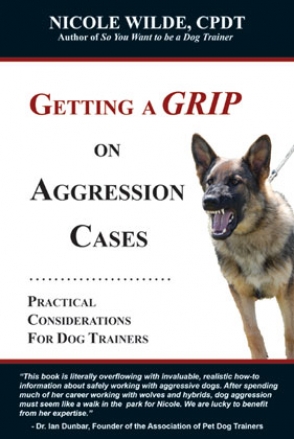Advice, answers, tricks and tips for anyone who shares or is considering sharing their life with these special companions. Packed with photographs.
Be Prepared...But Leave Some Expectations at the Shelter Door
I spent a large part of the 90s as a volunteer and then Volunteer Coordinator for an L.A. city shelter. One of my duties was to show dogs to prospective adopters. Over and over, I would see a curious thing happen: a family would be interested in an adorable, wriggling, friendly-looking dog. They’d pet the dog through the kennel bars, and perhaps even let the dog lick their hands or faces. It was clear that they were smitten. The mother would then call me over, point to the kennel card, and ask what kind of dog a “Staff X” was. I would explain that the card indicated that the dog was, as far as the staff’s best guess, a Staffordshire Terrier mix—in other words, a pit bull mix. Poof! Instantly the family would be two feet back from the cage, the mother pushing the child protectively in back of her. “That’s the same sweet, friendly dog you were petting a moment ago,” I’d point out. Nope. Not gonna happen. Once the word “pit” entered the mix, all bets were off.
Many shelters around the country have laws against adopting out pit bulls altogether, and even for those that do, this type of reaction isn’t uncommon. But it’s not just limited to pits. I’ve seen the same type of aversion from people toward rotties, chows, and other breeds. Now, it’s good to be informed about breed tendencies so as to make a good decision as to which dog might fit into your lifestyle. It’s quite another thing to see with your own eyes that a dog is acting in a friendly, well-adjusted manner, and then decide it can’t possibly be true based on breed stereotypes.
Deciding what qualities you want in a dog before you ever hit the shelter is always best, because we all know that logic goes out the window once you’re looking into a pair of big brown eyes. Make a list. What kind of energy level are you looking for? Is shedding important? What about friendliness with other dogs? Sociability and tolerance with kids? If you go armed with a list, you’ll be more likely to get a dog that matches your needs. And it’s always a good idea to have a trainer along so the dog can be tested for resource guarding, arousal levels, friendliness, and more. But don’t rule out dogs who may be part such-and-such breed on the basis of the breed alone; even within each breed, you’ll find a wide range of temperaments, and one might just be the perfect dog for you.
None of us wants to be judged based on our genetic makeup, so let’s extend that same courtesy to shelter dogs.










